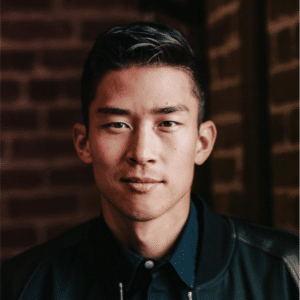Say “gaming” to me and I think of a recent Christmas gift from my daughter – my very own Nintendo Switch and Cooking Mama (yes even in games I’m a foodie). Little did I know that the pandemic would hit a few months later. Keeping close to home and gaming with my daughter became both a favorite pastime and also an opportunity for us to connect. And when the anti-Asian incidents started to spike, I learned how gamers were also mega influencers, raising awareness and educating followers to stand together with the Asian American community under attack.
As we celebrate AANHPI Heritage Month this year, the latest Nielsen report found that Asian Americans are seeking more representative content. In fact, in a recent survey, ⅔ of the Asian respondents feel there is not enough representation in media content. So does that “content” extend to games, gaming video content streamers, and esports? How have gaming influencers and content creators used their platforms to create safe spaces for the AANHPI community and advocated for issues they are passionate about? To learn more, I spoke with Asian American gaming influencers and content creators Mari (AtomicMari) Takahashi and Marlin Ramsey Chan to share their perspectives.

Mari Takahashi (AtomicMari) is a gaming personality, online host, and co-owner of the esports team SpaceStation Gaming (SSG). As a co-founder of gaming Youtube channel Smosh Games in 2012, she has witnessed the evolution and growth of the gaming audience over time. “Gaming used to be such a sleeper, a bit of an underdog, and widely overlooked as an entertainment medium compared to television and film. Now, gaming is undeniably in the forefront,” said Takahashi.
Indeed, Nielsen insights highlight that the entire audience for gaming video content (GVC) grew by 18% to 1.2 billion people in 2021. At the same time, findings from a GWI report reveal that the percentage of gamers aged 55-64 has grown by 32% in the last two years, underscoring the opportunity for more intergenerational co-viewing of gaming content.
Gaming used to be such a sleeper, a bit of an underdog, and widely overlooked as an entertainment medium compared to television and film. Now, gaming is undeniably in the forefront.
– Mari (AtomicMari) Takahashi, Gaming influencer & Content creator
Marlin Ramsey Chan is an online content creator and creator of MarMar Land, blending elements of edutainment, gaming, and fun geared towards younger audiences and families. Channels like MarMarLand are uniquely positioned to engage families. Noting that parents and guardians co-view content with children, he expressed the importance of creating gaming content with themes that both younger and older audiences can embrace. Integrating familiar concepts and classic playground games into digital spaces allows Marlin to connect across age demographics. “Challenges like “the floor is lava”. I think anyone can relate to that,” said Chan.
Nielsen research found that 34% of Asian gamers experience hostility from the gaming community*, which both Takahashi and Chan are working to change. As both gamers and gaming video content continue to diversify, they both emphasized the need to build inclusive gaming communities, focused on gameplay and teamwork.
Challenges like “the floor is lava”. I think anyone can relate to that.
– Marlin Ramsey Chan, Gaming influencer & Content creator
Takahashi emphasizes the importance of finding your voice, as a content creator and a gaming influencer. “I am the type of person who did not want to ruffle feathers or make waves. It is something that I am now realizing that it is important too,” said Takahashi. Discussing her efforts during the peak of Asian Hate, she encourages creators to continue using their voices: “Continue to have conversations and say: whether this directly impacts you or not, this is happening and it is important to talk about it,” said Takahashi.
“A big part of MarMarLand is showing teamwork and creating a sense of playing together,” said Chan. Gaming’s global reach, and befriending gamers with diverse experiences, were part of Chan’s experience growing up as a gamer. “I’ve had friends from all paths of life by playing World of Warcraft. When I was 13, I would make friends with a Mom from Ohio or a veteran in Chicago who became one of my best friends,” he said. The power of online gaming transcends geographic and regional boundaries, allowing gamers to empathize and build meaningful connections with others of diverse backgrounds and cultures.
I am the type of person who did not want to ruffle feathers or make waves. It is something that I am now realizing that it is important too.
– Mari (AtomicMari) Takahashi, Gaming influencer & Content creator
Our conversation gave me a lot of hope. Just over half of Asian American gamers say that video games have improved in diverse representation*, but we can’t stop there. As community builders like Takahashi and Chan continue to create inclusive gaming spaces through their platforms, both hope to inspire a culture in gaming centered around enjoyment.
“Everyone gets a controller,” Chan said. AANHPI Heritage Month is winding down, but let us keep up the spirit of games through connection, community, and just having fun together.
Patricia Ratulangi is VP of Global Communications at Nielsen. She oversees Nielsen’s internal and external communications focused on Diversity, Equity & Inclusion.
*Nielsen Games 360, March 2022
Full Video here


